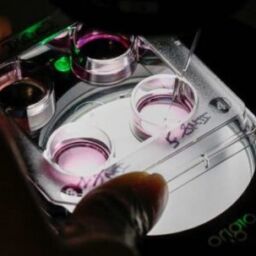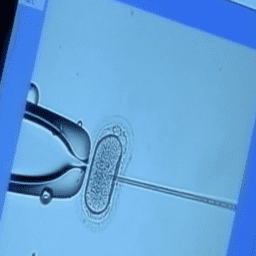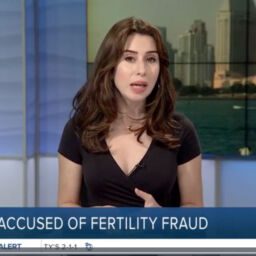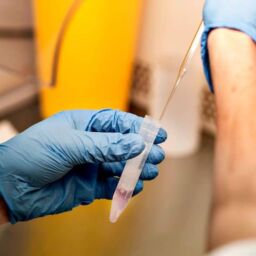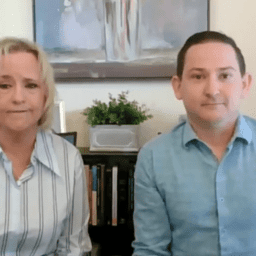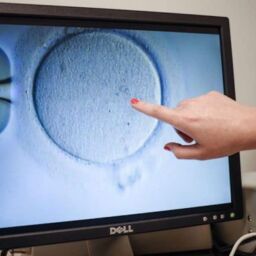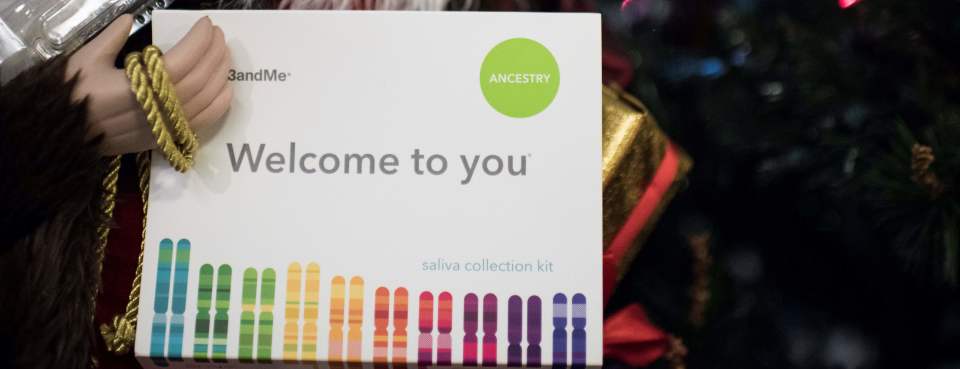
But early next year, some test-takers will be calling attorneys like Adam Wolf, who’s handled about a dozen lawsuits brought by people surprised to learn they were donor-conceived—and that their mother’s doctors were the donors.
“The blood just rushed out of me,” said Maia Emmons-Boring, who got the first inkling of the news while at a New Year’s Eve party in 2018-19, when she received a private message from Ancestry.com. But she wasn’t as surprised when she found out the donor was her mother’s doctor. “I just knew it in my bones,” she said.
Wolf, who practices in the San Francisco and Los Angeles offices of Peiffer Wolf Carr Kane & Conway, gets the most DNA-related inquiries during January and February, he said.
Known as fertility fraud, illicit insemination, and medical rape, the phenomenon is more widespread than most people think, said Jody Madeira, a professor at Indiana University Maurer School of Law in Bloomington, Ind., who studies fertility fraud.
While sub-$100 at-home DNA tests, which are often marketed as holiday gifts, have led to more testing and many of the surprises, the legal remedies aren’t always clear.
States Stepping In
It’s difficult to know how many legal cases have been filed, as most have settled confidentially with the plaintiffs signing nondisclosure agreements, said Madeira.
At least three lawsuits are expected to go to trial in 2021 in Colorado state court and in federal courts in Vermont and Idaho, absent any Covid-19-related delays. Along with at least two others pending in California and Indiana, these suits are helping victims and advocates create awareness and find legal solutions.
But a spate of criminal prosecutions could be looming, as Colorado and Florida passed laws this year making it a crime for a doctor to implant genetic material in a woman without her consent. Penalties increase in Florida if the genetic material is the doctor’s.
Texas and Indiana passed similar laws in 2019, and advocates are working on legislation in Ohio, Washington, and Nebraska.
Emmons-Boring played an instrumental role in passing Colorado’s law, which also creates a civil cause of action that gives the offspring standing and includes a $50,000 liquidated damages provision.
All the laws apply prospectively to conduct discovered after their passage.
Real Life Stories
Emmons-Boring said she took the genetic test late in 2018 “for fun,” and the New Year’s Eve private message from Ancestry.com was that a woman purporting to be her biological half-sister was trying to contact her.
A few weeks later she confirmed, using “mirror” family trees on Ancestry.com, that the “anonymous” sperm donor had been her mother’s doctor, Paul Jones, who for many years was the only obstetrician-gynecologist in her small Colorado town.
The case wasn’t an outlier. In Virginia, fertility specialist Cecil Jacobson is believed to have fathered over 70 children by inseminating patients with his own sperm.
In Nevada, Quincy Fortier, an obstetrician-gynecologist, may have had hundreds of biological children, as he often served as the “anonymous” donor for patients trying to conceive, beginning perhaps as early as the 1940s. An HBO documentary about his case is airing this month.
And in Michigan this month, news reports said a 104-year-old former Detroit fertility doctor is believed to have illicitly fathered hundreds of children over decades.
‘Black Hole’
Traci Portugal, who lives in Washington state, was devastated to learn she was donor-conceived after taking a 23andMe test while trying to find the origin of her medical issues. Her mother confirmed it after being confronted with the results, but had always thought the sperm was a mixture of her husband’s and that of an anonymous donor.
With the help of experts in genetics, however, Portugal learned the donor was her mother’s doctor, a San Diego, Calif., obstetrician-gynecologist.
She tried to contact him, but was rebuffed—a common experience for donor-conceived children. The doctor eventually relented to confirm something she’d discovered through her Ancestry.com research, that a close female relative of his had died of ovarian cancer.
Portugal fell into a “black hole with no footholds and no knowledge of how to piece back together who I was, where I belonged, and how I fit into this world,” she wrote on DonorDeceived.org, which she founded for victims of donor-deception, whether perpetrated by a doctor or a fertility clinic.
Court Relief, and Frustration
Medical malpractice claims are the most common cause of action, with plaintiffs asserting that a doctor’s actions violated medical standards of conduct. But statutes of limitations typically range from two to six years.
Discovery rules in many states extend that period, but they too have limits. In California, a medical malpractice claim must be filed within one year of the discovery of the wrong.
Some states impose a hard stop on medical claims. Texas doesn’t allow health-care liability claims to be brought more than 10 years after the wrongful conduct occurred, regardless of when the injury is discovered.
But the time period for filing suit can be extended based on a doctor’s “fraudulent and intentional concealment” of their actions, Wolf said.
Statutes of limitations have been extended in a few states. Florida’s 2020 “medical battery” law says the statute of limitations starts to run when the crime is discovered and reported to law enforcement.
Best Way Forward
Interim rulings in the few civil cases moving forward are helping educate potential plaintiffs and their lawyers, Madeira said.
A federal court in Idaho threw out all but a medical malpractice claim. That foreclosed the child’s suit because a physician-patient relationship is an essential element of a medical malpractice claim—and the court didn’t consider the child to have been the doctor’s patient.
A Colorado case filed by Emmons-Boring and over 20 half-siblings appears to be the only one to have allowed claims by the offspring to proceed, Emmons-Boring said. But they were allowed to move forward only on the outrageous conduct claim, she said.
The Colorado court also allowed the mothers to proceed against the doctor on claims for negligent act or omission, medical negligence, fraud, negligent misrepresentation, breach of contract, battery, and outrageous conduct.
Jerome F. O’Neill and co-counsel Celeste Laramie convinced a federal court in Vermont this year to allow their clients, Cheryl and Peter Rousseau, to proceed on claims for fraud, breach of contract, and medical battery, as well as medical malpractice against John Boyd Coates. The attorneys are with Gravel & Shea PC in Burlington.
‘She Wanted a Baby’
The doctor, whether retired or still in practice, is the main defendant in these cases. Most deny liability, though a few have admitted it or been forced by courts to take DNA tests proving paternity.
For those, the most common defense is: “She wanted a baby, and I gave it to her.”
A few plaintiffs also have sued the doctors’ practices or the institution the doctor was associated with. That’s a hard case to make, usually requiring an employer-employee relationship, and most doctors are independent contractors, O’Neill said.
“The facts have to align perfectly,” Madeira said.
If there is enough to proceed on an agency-type claim, the plaintiff must also show the institution knew or should have known of the doctor’s activities. The Colorado case includes a claim against the doctor’s practice because there’s evidence one of his partners knew.
The doctor must be alive, Wolf said. Recovering damages from his estate is unlikely, O’Neill said.
A doctor’s malpractice insurer also may be brought into the case, though it probably will deny responsibility on the ground that the doctor engaged in intentional conduct beyond the scope of the policy. Emmons-Boring’s case has been delayed as the insurers duke it out over which policy was in effect when the conduct occurred.
Proving the Case
Proving the doctor’s wrongdoing can be challenging, though the hard work is done well before getting to the filing-a-lawsuit stage.
Emmons-Boring and Portugal traced their origins back to their mothers’ doctors using publicly available information on Ancestry.com. The Rousseau’s daughter worked with experts in genetics after her results connected her to a relative of Coates’ who’d authorized 23andMe to make her results publicly available, O’Neill said.
But many people—including Coates himself—opt to keep their information private, which complicates the search, Laramie said. “It can be a real labyrinth to find and trace” matches in that event, O’Neill said.
Coates still hasn’t admitted he’s the biological father, and the results of a court-ordered paternity test are sealed, O’Neill said.
That the case wasn’t dismissed after the test results were in, though, is telling, Madeira said. “The proof is in the pudding,” she said.
The donor-conceived children mostly want information, such as the doctor’s full medical history, Emmons-Boring said.
The parents want back the money they paid the doctors for the fraudulent insemination procedures, Wolf said.
And all of them are seeking damages for the emotional distress caused by learning about the doctor’s conduct. The news “is just devastating to all involved,” O’Neill said.
The mothers “never imagined that the doctor who performed their most intimate examinations would betray them” in this way, Laramie said. There’s “no accounting for the emotional weight of that.”
Due to state caps on noneconomic and punitive damages, the actual monetary recovery, if any, likely will be small. And some states require a portion of the punitive damages to be paid into a public fund—in Indiana, it’s 75%, Madeira said.
Lawsuits “are particularly painful,” Madeira said. But for many people, they seem to be the only way to get a doctor to own up to what he did and the harm he’s caused. No one does this for the money, she said.
Litigation can’t undo the misconduct, Wolf said. But it “can shine a light on it.””
BloombergLaw | Mary Anne Pazanowski | December 23, 2020
FREE CONSULTATION | 415-766-3545
Peiffer Wolf is nationally recognized for representing victims of fertility clinic misconduct and fertility doctor misconduct, including destruction or loss of eggs and embryos. If you or your family have been the victim of a reckless or negligent fertility clinic, fertility medical center, or fertility doctor, Contact Us by calling 415-766-3545 or by filling out an online Contact Form for a FREE Consultation.



